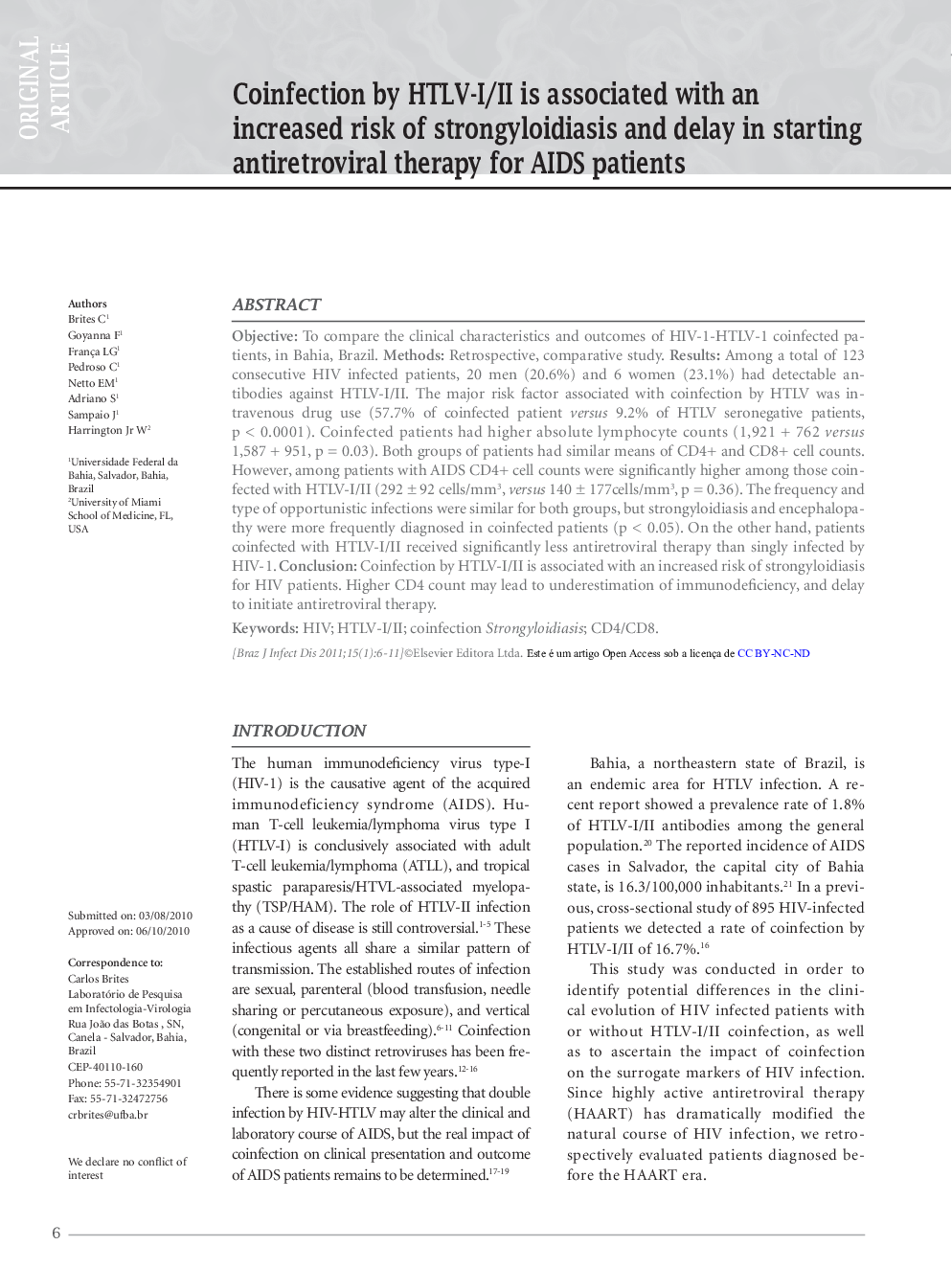| کد مقاله | کد نشریه | سال انتشار | مقاله انگلیسی | نسخه تمام متن |
|---|---|---|---|---|
| 3344605 | 1591216 | 2011 | 6 صفحه PDF | دانلود رایگان |

ObjectiveTo compare the clinical characteristics and outcomes of HIV-1-HTLV-1 coinfected patients, in Bahia, Brazil.MethodsRetrospective, comparative study.ResultsAmong a total of 123 consecutive HIV infected patients, 20 men (20.6%) and 6 women (23.1%) had detectable antibodies against HTLV-I/II. The major risk factor associated with coinfection by HTLV was intravenous drug use (57.7% of coinfected patient versus 9.2% of HTLV seronegative patients, p < 0.0001). Coinfected patients had higher absolute lymphocyte counts (1,921 + 762 versus 1,587 + 951, p = 0.03). Both groups of patients had similar means of CD4+ and CD8+ cell counts. However, among patients with AIDS CD4+ cell counts were significantly higher among those coinfected with HTLV-I/II (292 ± 92 cells/mm3, versus 140 ± 177cells/mm3, p = 0.36). The frequency and type of opportunistic infections were similar for both groups, but strongyloidiasis and encephalopathy were more frequently diagnosed in coinfected patients (p < 0.05). On the other hand, patients coinfected with HTLV-I/II received significantly less antiretroviral therapy than singly infected by HIV-1ConclusionCoinfection by HTLV-I/II is associated with an increased risk of strongyloidiasis for HIV patients. Higher CD4 count may lead to underestimation of immunodeficiency, and delay to initiate antiretroviral therapy.
Journal: The Brazilian Journal of Infectious Diseases - Volume 15, Issue 1, January–February 2011, Pages 6-11